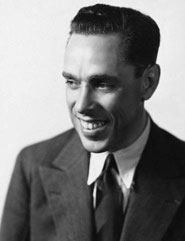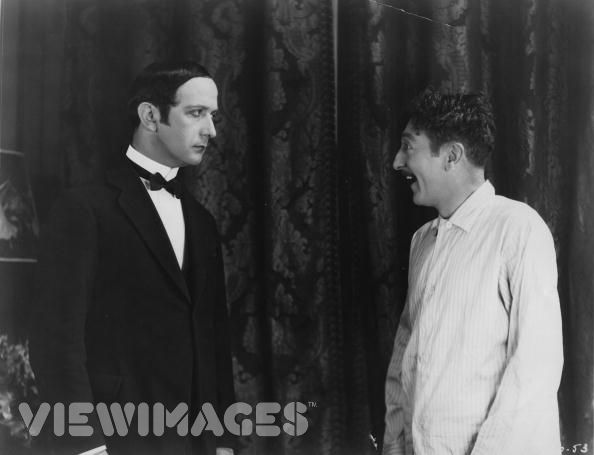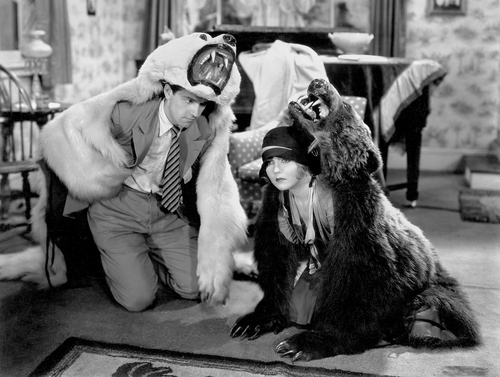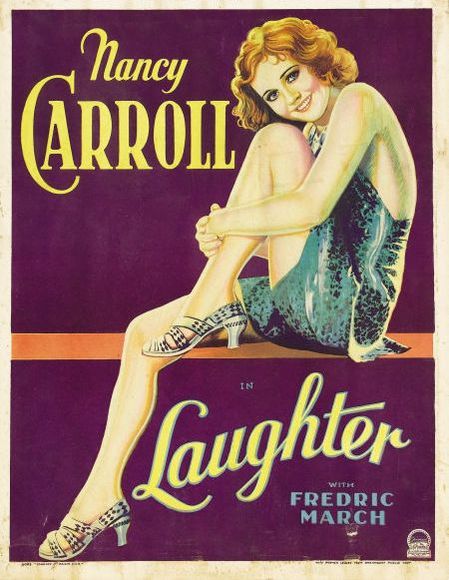Harry d’Abbadie d’Arrast (1897-1968) made eight films, all between 1927 and 1935, and apparently some of these are lost. (He was fired from the early talkie Raffles — which seems to retain a few d’Arrastian qualities — and replaced by George Fitzmaurice, and reportedly he also did some uncredited work on Wings.) I’ve seen three of his films — the two briefly described below (both for the 2009 catalogue of Il Cinema Ritrovato in Bologna) and Topaze (1933) — and all of them are pretty remarkable. (The latter is a Pagnol adaptation with one of John Barrymore’s most touching performances.) As far as I know, the only one who ever wrote about this figure in any detail was Herman G. Weinberg in Saint Cinema. According to Pierre Rissient, who knows a lot about d’Arrast (and passionately denies that he was antisemitic — a gossipy accusation I’ve sometimes heard about him, presumably as a partial explanation for why he fought as often as he did with producers), d’Arrast also had a lot to do with the preparation of one of my favorite musicals, Hallelujah, I’m a Bum! (1933), which wound up being directed by Lewis Milestone.
The following capsules were written for the catalogue of Il Cinema Ritrovato in June 2009. — J.R.
A Gentleman of Paris
Harry d’Abbadie d’Arrast worked as Parisian advisor on A Woman of Paris and as assistant director on The Gold Rush. So it’s reasonable to place his own films squarely in the School of Chaplin — particularly the Lubitsch branch emanating from A Woman of Paris. Even the title of d’Arrast’s second feature rightly suggests a spinoff. Yet for me, the caustic celebration of the carousing and deceit of a wealthy scoundrel (Adolphe Menjou) and the revenge of his servant (Nicholas Soussanin) also suggests Stroheim, above all in the sly attention to details, even if the deadly games in this case aren’t played for keeps. But maybe the most apt cross-references for d’Arrast are literary: Schnitzler here (though the literal source is a 1904 novel and a 1908 play by Roy Horniman, updated by Herman J. Mankiewicz’s brittle titles), just as the forced gaiety and jaded wealth of the subsequent Laughter evoke F. Scott Fitzgerald by way of Donald Ogden Stewart. (Jonathan Rosenbaum)
Laughter
One of the Algonquin wits who went with Hemingway on his jaunts to Pamplona, Donald Ogden Stewart wrote about the high life of the spoiled rich from the inside (as reflected not only in his cynical, classic short story “The Secret of Success,” but also in his work for McCarey, Lubitsch, and, especially, Cukor). Reportedly he became a radical (and later a blacklisted European exile) only after linking up with Ella Winter, the ex-wife of Lincoln Steffans, in the mid-30s. But the seeds of his discontent are already apparent in his original script for d’Arrast’s first talkie (1930), produced by Herman Mankiewicz — a despairing comedy that flopped commercially even while it had a certain critical success. D’Arrast (1897-1968) — a French-Basque aristocrat who was born in Buenos Aires and died in Monte Carlo — also differed from Chaplin and Lubitsch by being born into privilege. Glenn Anders, who would later play Grisby in The Lady from Shanghai, costars with Nancy Carroll, Fredric March, Frank Morgan, and Diane Ellis (in a part originally planned for Carole Lombard). (Jonathan Rosenbaum)





